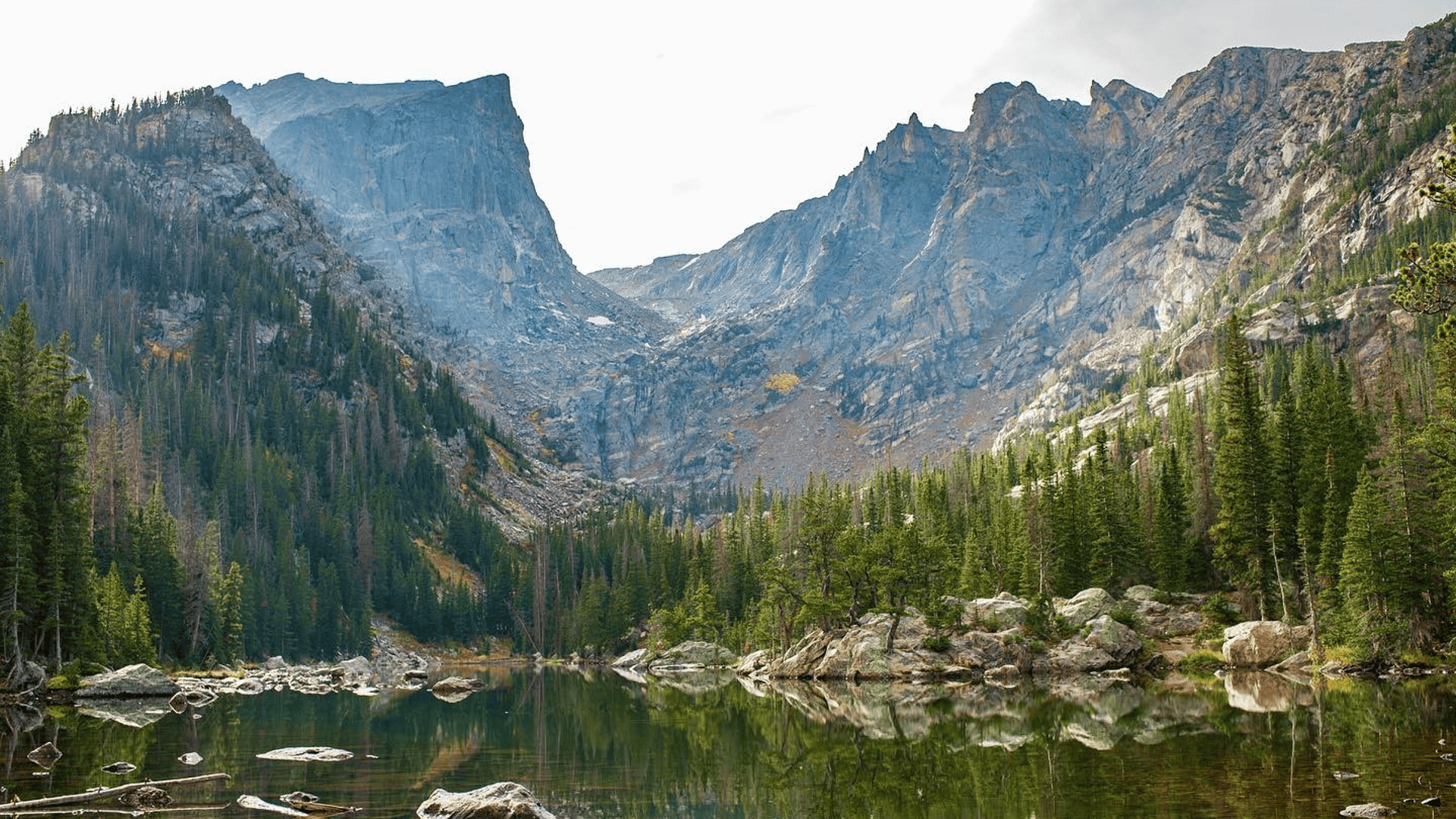Beginner's Guide to Rocky Mountain National Park

Good news: we've compiled all the info you need to make your first visit to Rocky Mountain National Park a breeze with this beginner's guide.
THE WEST SIDE OF ROCKY MOUNTAIN NATIONAL PARK
Check Rocky Mountain National Park’s current reservation requirements and make your reservation at Recreation.gov.
If you have never been to Rocky Mountain National Park, you’re in for an extraordinary experience. This national park hasn't changed much over the years. With its rolling tundra, stoic mountain peaks, glacier-carved valleys and abundant wildlife, the same things that made this place special in 1915 when it was declared a national park continue to make it special today. But with the park's staggering 416 square miles, it can seem a little daunting to know where to start. Get a beginner’s guide to Rocky Mountain National Park below.
The Lay of the Land
Rocky Mountain National Park has two distinct halves, which are connected by the highest continuously paved road in North America: Trail Ridge Road. No trip to the park is complete without driving the 48-mile road in its entirety. However, it is important to note that the road is closed in winter due to snowpack.
The eastern slope of the park includes notable attractions like Longs Peak, Moraine Park, Bear Lake, Wild Basin and Sprague Lake, and as a result, it is the more heavily trafficked side of the park.
The western slope of the park features Colorado's largest natural lake (Grand Lake), an expansive valley abundant with moose and elk (Kawuneeche Valley), the headwaters of the Colorado River, and more than a dozen backcountry valleys perfect for horseback riding and hiking excursions.
Know Before You Go
Public lands are the heart and soul of Colorado, providing a stunning natural backdrop for outdoor recreation and a haven for wildlife. They are measured in more than just acres — they are the memories we make, the moments we cherish and the natural wonders we protect.
So as you explore Rocky Mountain National Park, be sure to follow Care for Colorado Leave No Trace Principles to ensure its beauty remains unspoiled for future generations.
And if you're interested in more ways to protect public lands and roam responsibly in Grand County, join the #StandGrand campaign to plan for the future of recreation as a steward of our invaluable lands, water and wildlife.
Where to Stay
The park's two main gateway towns — Grand Lake and Estes Park — are not short on hotels, motels, inns, bed-and-breakfasts and vacation rentals. As a result, either works as a great basecamp for your first adventure.
Grand Lake's accommodations offer the added bonus of access to such outside-the-park attractions as Shadow Mountain Lake, Lake Granby, the Indian Peaks Wilderness, Winter Park, Fraser and Hot Sulphur Springs. Nearby, Granby and Kremmling also offer a variety of authentic Colorado lodging options, and they are only a short drive from the park.
If you are looking to camp, the park offers five campgrounds of various sizes, with all but the Longs Peak Campground accommodating RVs. The Timber Creek Campground on the west side of the park lies in the heart of the Kawuneeche Valley, and its spacious 98 camp sites are peaceful and scenic.
See all the campgrounds in Rocky Mountain National Park.
When to Visit
Rocky Mountain National Park offers plenty of contrast from one season to the next. Summer (generally Memorial Day to Labor Day) is peak visitor season for good reason — trails are snow-free, the park's wildlife is active, and the wildflowers are in full bloom.
- A Timed Entry Permit or reservations are required to enter the park during peak season.
- Plus a park pass or entrance fee for your vehicle.
But ask a local or frequent visitor to the park, and they will tell you that autumn (generally Labor Day to mid-October) is their favorite time of year. While you may see an early snowstorm during this season, you are more likely to see the aspen trees and tundra grasses turning their vibrant shades of gold and red, and you are also likely to hear elk bugling during their annual rut season. Trails often remain accessible, and most campgrounds remain open during this time as well. Check out our top five places for fall colors for even more itinerary ideas.
In winter, Trail Ridge Road (which connects the eastern and western halves of the park) closes due to snowfall, and the park sees little visitation. But for outdoor enthusiasts looking to cross-country ski or snowshoe, the park's valleys and trails are a sublime winter wonderland where you can see fresh animal tracks, frozen waterfalls and snow-covered peaks.
Rocky Mountain National Park Visitor Info
Get More Rocky Mountain Trip Inspiration
Looking for even more itinerary inspiration for your next trip to Rocky Mountain National Park? Check out these resources:
